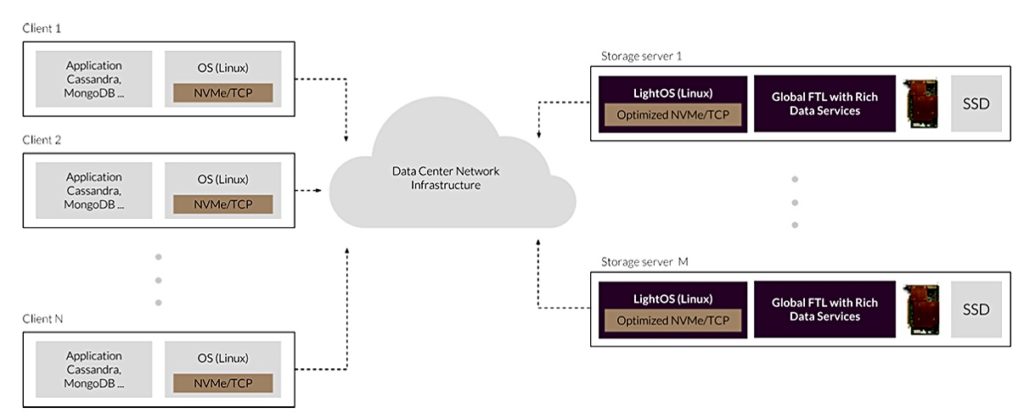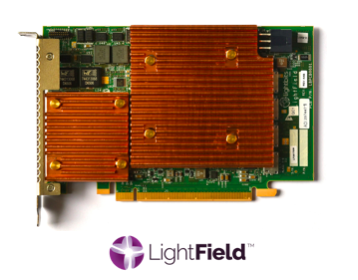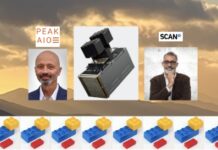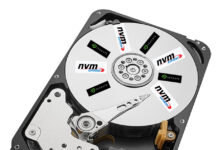You wait for a bus for ages and then two come along at once. So it is with NVMe/TCP – Toshiba and Lightbits Labs have introduced NVMe/TCP product on the same day.
NVMe/TCP is the NVMe protocol running across Ethernet and TCP. NVMe/TCP uses the data centre’s existing Ethernet infrastructure, unlike the RDMA version of NVMe-oF (RoCE). This means no custom content is required, Eric Burgener, IDC’s research VP, says, and lowers costs and eases management overheads.
Using ordinary Ethernet NVMe/TCP has a latency of roughly 200µs compared to RDMA-based NVMe-oF’s 100-120µs. The difference is of no practical consequence, especially when compared with latencies of around 100,000µs for iSCSI and Fibre Channel access to a SAN array.

Lightbits Labs
Lightbit Labs, an Israeli startup, officially emerged from stealth today, backed to the tune of $50m by industry heavyweights Dell EMC, Cisco and Micron and sundry VC firms.
The company has introduced its LightOS software running inside a LightBox array with an optional LightField hardware accelerator.
LightOS presents a virtualised set of NVMe SSDs at accessing Linux servers which run a standard NVMe/TCP client driver. The LightOS provides a global flash translation layer (GFTL) which looks after wear-levelling across all the SSDs, doing a better overall job, Lightbits says, than drive-level FTLs.

LightOS GFTL features thin provisioning and compression, data striping across drives, erasure coding and quality of service (QoS) per-volume to prevent ‘noisy neighbours’ hogging an unequal share of the system’s resources in a multi-tenant environment. There is also a REST API.
The LightField card adds hardware acceleration to the LightOS feature set. No information about hardware components has been released.

Lightbits says its NVMe/TCP system is scalable and can provide millions of IOPS. Its design provides a low write latency (with a persistent write buffer), consistently low read average latency and and a low tail latency.
Tail latency is the random occurrence of higher latencies and keeping their rate and size down helps make an array’s behaviour more consistent.
LightOS and LightField are available separately to run inside a customers’ X86 servers, and LightOs supports ARM processors too. Both are ready to support QLC (4bits/cell) flash, the company says.
LightOS and LightField are available for purchase but we have no pricing or sales channel information. You can register for a demo here.
Toshiba KumoScale
KumoScale is Toshiba’s NVMe-oF array software, introduced in March last year. Conceptually it is Toshiba’s equivalent of LightOS.

KumoScale now supports TCP transport in its 3.9 production release, available today. It also supports RoCE v 2 networks.
Toshiba does not build its own NVMe SSD arrays that could run KumoScale, and no array-building partners have yet been announced by Toshiba. A demo was run in November 2017 – yes, 2017 – at Supercomputing 2017 using Newisys’s NSS1160G-2N NVMe-oF hardware platform.
Update: A Toshiba spokesperson said: “We have several systems partners (and their reseller networks) that we have qualified with KumoScale. These partners include Supermicro, Tyan and Quanta, and their products are in our HCL (hardware compatibility list) that we share with customers.”
Find out more about KumoScale here.







